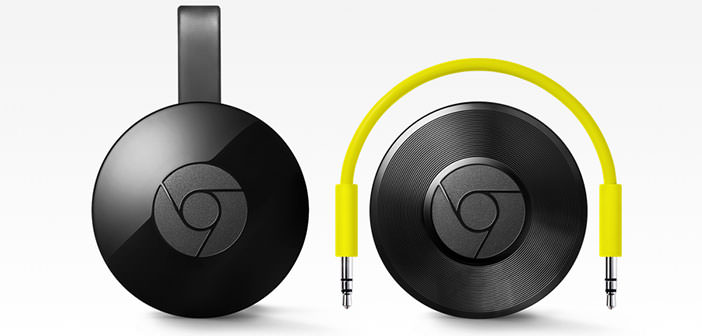Two multimedia devices announced by Google on September 29: the new Chromecasts and Chromecasts Audio to become intelligent televisions and stereo.
September 29 was a big day for Google. After presenting Nexus 5X, Nexus 6P and Pixel C, the company has removed the veil from the new Chromecasts. The first news that catches the eye is the appearance, greatly revolutionized compared to its predecessor: the dongle HDMI has now a circular form factor and is available in three different colors, black, red and yellow. Big lack support for 4K stream, the maximum resolution supported is the full HD.
The application Chromecasts for iOS and Android is extensively redesigned to make the search (including voice) content is easier than ever before. Content can be transmitted more effectively to the dongle through the support of the ” Fast Play ” and the support of Wi-Fi 802.11ac also 5 GHz. The dongle can also dynamically choose which antenna to use between the three available, in order to guarantee the best possible reception.
The new Chromecasts also allows you to stream games from a mobile device, both iOS with Android. You can also display different content on the TV and the display of the external device, so use this as a game controller. With a single HDMI dongle connected to the TV can play up to four users simultaneously.
The list of specific technical reports that the new Chromecasts comes with a power cable of 1.75 meters and weighs 39 grams. It has two doors: one HDMI for connecting to the TV and a micro-USB for power. We do not know yet what the integrated hardware, apart from the 512 MB of RAM DDR3L, support Full HD resolution and the widest compatibility with wireless connections.
On the multimedia, Google also announced a whole new device, called Chromecasts Audio. It connects to a stereo system via traditional 3.5mm jack and sends the audio wirelessly also to plants of old design but not very valid on the soundstage. In short, if Chromecasts becomes Smart TV, TVs older Chromecasts Audio makes ” smart ” conventional stereo.
Chromecasts Audio must still be connected to an external power source and has a guest access to any guests not connected to the Wi-Fi network. In the future, it will also support for multi-room audio, which easily manage multiple systems connected to as many dongles.



